The subtleties of reproduction of spirea by cuttings
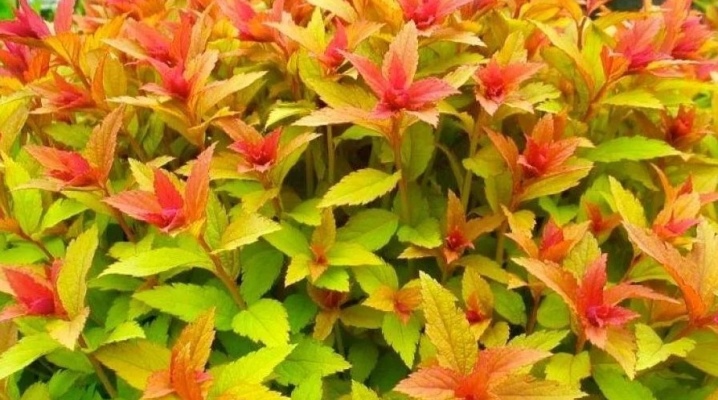
Spirea is a genus of ornamental shrubs. Such a plant is often used in landscape design to decorate personal plots. Many amateur gardeners are wondering how these beautiful bushes can be propagated. One of the simplest methods is to breed spirea with cuttings. We will consider the subtleties of plant cuttings in more detail in this article.
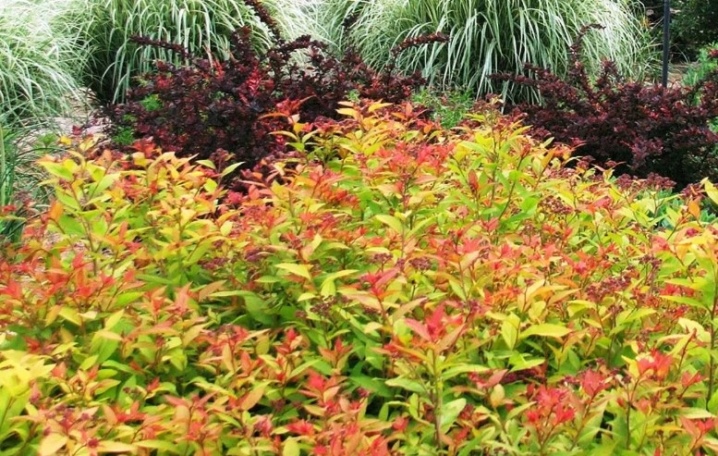
The right time
Spring is considered the best time for propagation of spirea by cuttings. However, some plant varieties may have different propagation times. For example, those varieties that bloom in spring are best propagated in summer. You can also breed a shrub in the fall.
Regardless of the time of the year, it is recommended to also take into account the weather conditions. It is recommended to harvest shoots in rainy and cloudy weather. If reproduction is carried out in the spring, then it is advisable to wait for the cessation of active growth of greenery on the bushes or, conversely, to harvest the cuttings before the buds begin to swell. When breeding in the summer, it is important that the weather is not hot and dry, otherwise the cuttings may not take root, and it is also important that the spirea does not bloom during the breeding season.
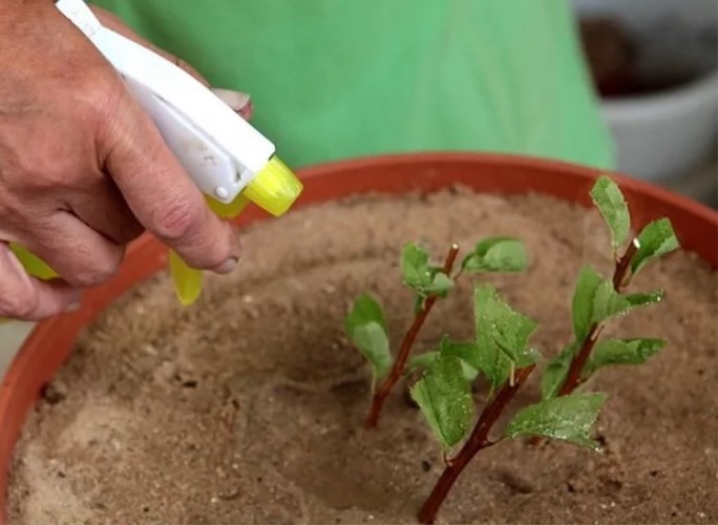
If breeding is planned to be carried out in the fall, then you need to be in time before the onset of frost. Branches are harvested in September, and rooting and planting in open ground must be carried out before early October. It will be important to insulate well with spirea for the winter. Otherwise, the process of breeding a shrub is practically the same regardless of the season.

Harvesting cuttings
As noted earlier, it is recommended to harvest branches in cool and cloudy weather. The branches are cut from healthy and strong bushes. If the plant has signs of disease or parasite damage, then before harvesting the cuttings, the shrub must be treated with special means. After spraying, shoots can be cut off no earlier than on the fourth day. If it was not possible to cure the plant the first time, then it is recommended to repeat the treatment of the bush. For reproduction, you only need to cut straight branches growing up. Brown shoots should not be more than one year old.
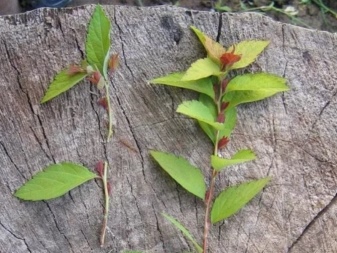
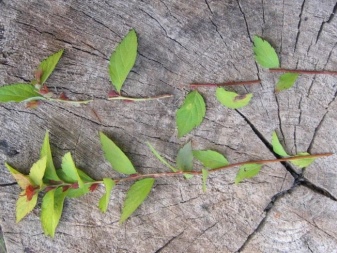
If the harvesting of branches takes place in the summer, then those shoots on which flowering has already stopped are cut off. It is desirable that all leaves on them are intact. For reproduction, both very young cuttings and annuals are suitable. The length of the cut branches should be about 11-15 cm. Each cutting should have at least 4 green leaves or buds. Cut off the shoot with a sharp knife or blade at an angle of 30 degrees. The top of the branch also needs to be trimmed, but already at right angles.
Important! It is recommended to trim the leaves a little: the two lower ones are removed completely, and the upper ones are shortened exactly by half. This procedure will speed up the rooting of cuttings, as it will provide less moisture loss.
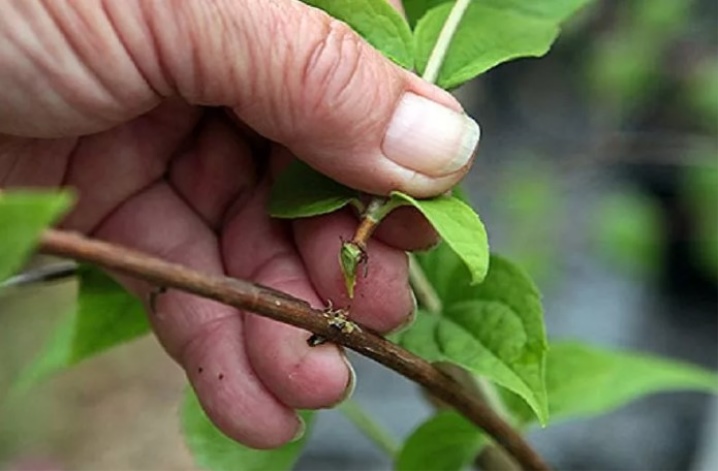
Rooting
To stimulate root growth after cutting the branches, it is recommended to put it in a special composition for a while. In the store for these purposes, you can buy such products as "Kornevin", "Heteroauxin" and "Vympel". After processing the branches, they must be seated in small containers. Let's consider the rooting process in stages.
- To root shoots at home, you first need to prepare the substrate.The easiest way is to use wet sand. You can also mix sand from peat or use any other loose soil. It is recommended to treat the substrate with a fungicide to prevent root rot.
- As for the container in which the branches will be planted, any containers with holes at the bottom are suitable here. It is necessary to plant cuttings correctly at a depth of 3 cm at an angle of about 45 degrees. It is necessary to observe the angle of inclination so that the growth of the upper parts of the branches slows down, and root formation, on the contrary, is activated.
- It is important that the soil is moist during planting. After the branches are submerged in the substrate, they also need to be sprinkled with water. It is advisable to cover the cuttings on top with a film or a cap from a plastic bottle. This manipulation is necessary to create conditions of high humidity and maintain temperature.
- Periodically, the seedlings are taken out of the shelter and moistened with a spray bottle. During cultivation, it is important not to allow the soil to dry out, but at the same time, do not overmoisten the spirea. Containers with cuttings should be removed to the windowsill, where the sunlight will not be too bright.
- As an alternative to keeping the seedlings for rooting, bury the containers in the garden. From above, you need to put dry leaves or peat on the ground so that the root system does not freeze. In winter, the container with seedlings is removed to the basement or transferred to another dark, cool place.

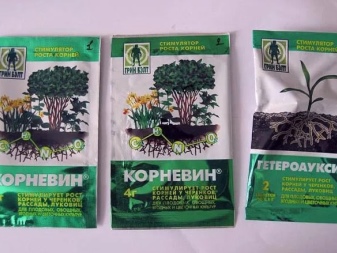
You can grow shoots not only in pots. If desired, a greenhouse is built on the site under the spirea.
- First, a garden bed is dug up, organic fertilizers are applied. It is recommended to add peat mixture and river sand to the ground. Then it is recommended to moisten the soil well.
- The branches are planted at a distance of at least 10 cm from each other. Next, you need to install the greenhouse frame and stretch the film on top. Polyethylene must be fixed well by pressing it to the ground along the perimeter of the greenhouse with bricks or other heavy objects.
- It is recommended to open and ventilate the mini-greenhouse from time to time. And also do not forget about regular watering of seedlings. For the winter, the film is removed, and the cuttings are sprinkled with a peat mixture.
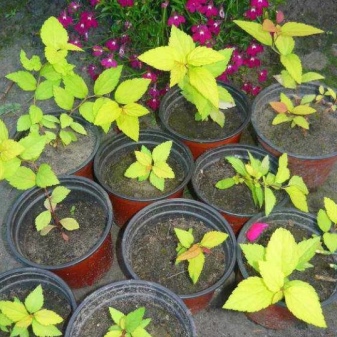
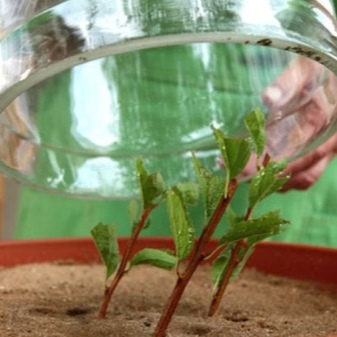
Further care
Care of cuttings is not particularly difficult.
- It is important to ensure that the soil in the greenhouse or pots does not dry out. From a spray bottle, surface spraying can be done daily. In hot weather, it is recommended to moisturize at least twice a day.
- When many drops settle on the inside of the film or cap from the bottle, ventilation should be organized. It is important to ensure that the shoots do not come into contact with each other if they are planted in the same container, and also that they do not touch the shelter, otherwise this can lead to the formation of rot.
- The root system will form in about three weeks. After that, the seedlings are taken out of the shelter and for another two weeks they just need to be watered. After this time, the cuttings are planted in separate pots, if they originally grew in the same container.
- Single-shoot pots are brought out into the open air for final rooting. It is recommended to keep them in the shade. When the seedlings are fully strengthened, they are transplanted into open ground to a permanent place.
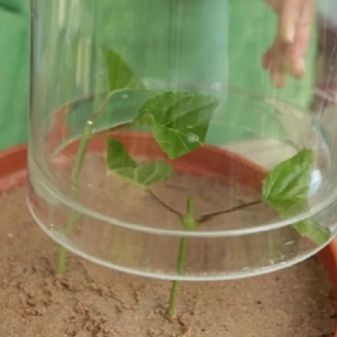
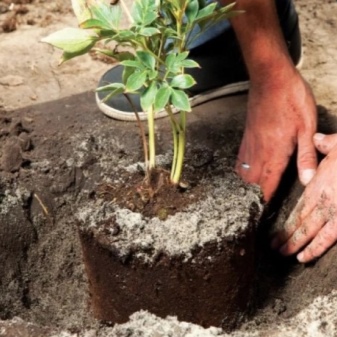
Transplant to open ground
Planting in a permanent place is carried out after the roots grow from the cuttings. If rooting occurred in the fall, then planting in open ground is carried out only in the spring. If grafting was carried out in spring or summer, then transplantation to a permanent place can be carried out both in autumn and next spring. When choosing a site, it is important to take into account its illumination and soil composition. The place where the spirea will grow should be well lit and protected from strong gusty winds. The soil should be fertile, for which you can apply fertilizers to it, and loose.If the ground is rather heavy, then a rather large hole is dug under the cuttings, at the bottom of which drainage is placed.
There should be no holes at the landing site so that after rains and melting snow, water does not stagnate near the bush. The hole for germinated cuttings should be 3 times wide and 1.5 times larger than the root system. It is advisable to add peat and sand to the garden soil. After the seedling is placed in the hole, it is necessary to carefully spread its roots. Planted shoots should be watered abundantly and covered with mulch.
If several bushes are located on one site at once, then the distance between them should be in the range from 40 to 70 cm.
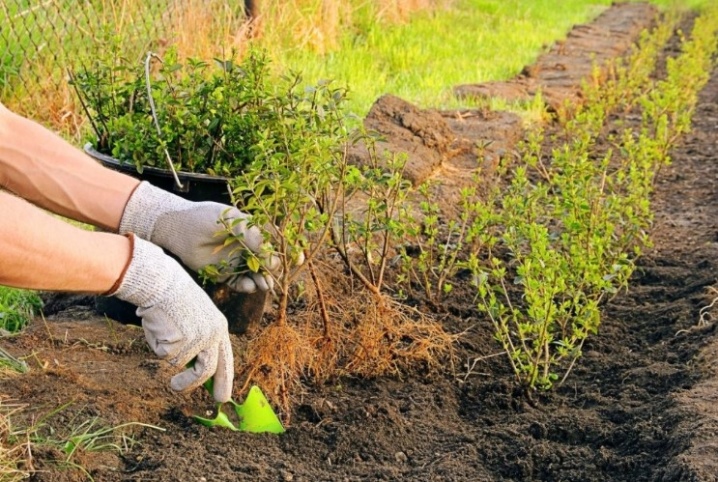
Helpful hints
To propagate spirea by cuttings, you do not need to be a professional gardener. This procedure is quite simple, even a beginner can handle it. For successful breeding of a shrub, you can use the following useful recommendations:
- to protect the cut shoots from diseases and parasites, they can be treated with a solution of potassium permanganate;
- the best "neighbors" in the garden are coniferous crops;
- when landing in a permanent place, it is recommended to lay a drainage from brick chips or a mixture of sand and pebbles into the hole;
- for one year after planting the spirea in the garden, the plant needs careful care; watering should be carried out constantly so that the roots cannot dry out;
- during active growth, bushes transplanted into open ground need to be fed; mineral compositions and organic fertilizers can be used as top dressing.
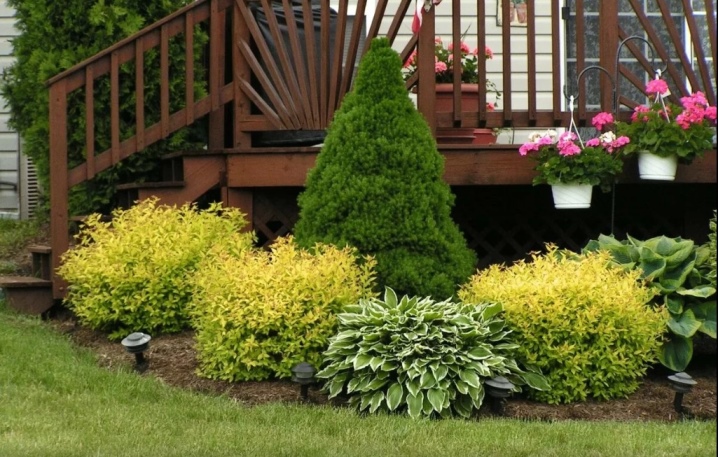
You can learn more about the propagation of spirea by cuttings from the video below.

































































The comment was sent successfully.